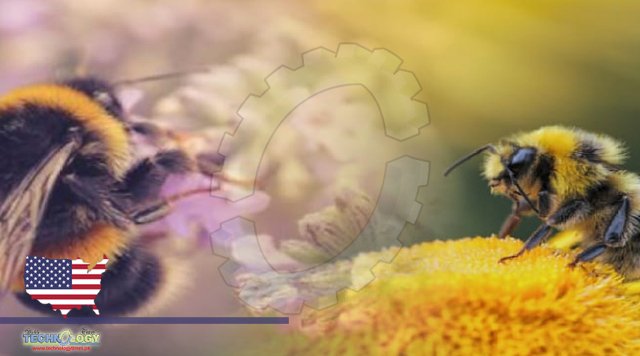The plight of the bumblebee has been well documented. In recent years, researchers and advocates have reported worrying population declines across North America and Europe as climate change menaces the fuzzy insects.

But scientists have been limited in their ability to pinpoint what has stressed bumblebee populations in the past, and what factors will imperil the them in the future. A team of British researchers found that four bumblebee species they studied appear to have become increasingly stressed by climate change over the past century. The stress appeared higher in the latter half of the century, they found, tracking with rising global temperatures and more frequent extreme weather. To arrive at their results, the scientists measured the wings of thousands of bumblebee specimens collected over more than 100 years and housed in a network of natural history museums. Using digital cameras and special software, they looked for subtle asymmetries in the wing structure — a signal of environmental stressors that could affect bee growth and reproduction. They then compared their findings with historical climate data to find out if harsh weather may have made life harder for the insects. The hotter and wetter the weather, the more likely the bees were to grow lopsided wings, according to the researchers.
The conclusions suggest that bees could face mounting threats as weather worsens and world governments struggle to curb carbon emissions that fuel climate change. The prospect of bee numbers plummeting further is a major concern because the insects play a key role in pollinating wildflowers and crops, including staples such as tomatoes, potatoes and peppers. “This should reinforce the message that human contributions to high rates of changing climate can affect wildlife in many different ways, and we are putting these organisms at risk — which in the case of bees are crucial insect pollinators,” Richard Gill, a scientist at Imperial College London and co-author of the research paper, said. “They are amazing creatures that provide so many ecosystem services that we take for granted and we get essentially for free.” The study could also offer researchers important tools for predicting when and where bumblebees are most at risk, and help them make decisions about how best to protect them.
“The key thing really is that there is a way to measure bumblebees’ stress, at least comparatively,” Richard Comont, science manager at the Bumblebee Conservation Trust, a British conservation group, told The Post. “This opens the possibility to compare populations, and potentially different species, to decide which to focus conservation efforts on in the future.” Comont wasn’t involved in the study. “This is critical for predictive modeling into the future, to target conservation efforts, and to understand which species are most at risk, and subsequently which plants and crops that they pollinate are at risk as well.”Bumblebee populations have dropped throughout the United States and Europe as Earth has heated up. Research from 2020 found that the number of areas populated by the insects had fallen 46 percent in North America and 17 percent in Europe. Places with steep declines also experienced dramatic swings in climate, including higher temperatures and more intense heat waves.
Source: This news is originally published by washingtonpost